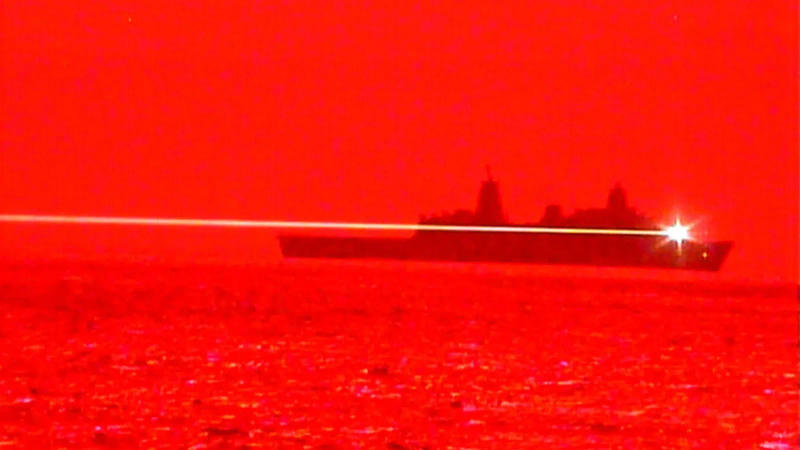Published 13:31 IST, January 10th 2024
US Navy Pushes for More Laser Weapons on Warships Amid Rising Threats from Houthi Rebels in Red Sea
After the attacks by Houthi rebels, the US Navy intends to pursue the deployment of more cost-effective and long-range-capable laser weapons on warships.

Washington: In the wake of extensive missile and drone attacks in the Red Sea by Iran-backed Houthi rebels, the US Navy is considering deploying more laser or Directed Energy weapons (DEW) on warships due to new threats that are both cost-effective and capable of long-range attacks, according to reports.
US Vice Adm. Brendan McLane addressed the Naval Surfaces Forces, expressing the urgent need to install these laser weapons on numerous ships. He said,”I am not content with the pace of directed energy weapons. We must fulfil the potential this technology offers.”
Laser Frenzy of US Navy & Decade of Frustration
Nearly a decade ago, Commander McLane led the USS Carney in the Middle East when the Navy authorised the crew of USS Ponce to utilise a $40 million Laser Weapons System against potential threats. Since then, operational laser weapons on US ships have been scarce, leading to frustration for McLane. He remarked, “I am eager to accelerate the development of directed energy weapons because of their significant advantages in magazine capacity, speed, and distance.”

Recent incidents in the Red Sea saw destroyers intercepting over 62 different threats, including ballistic and cruise missiles, as well as inexpensive Kamikaze drones used by the Houthis. The US ships utilised Air Defense missiles, such as the RIM-66 or Standard Missile 2, to counter and neutralise these threats. To provide context, while an SM-2 missile costs approximately $2.1 million, a drone from the SAHED series costs only $20,000.
According to reports, it was Cdr McLane, who proposed installing laser weapons on smaller Littoral Combat Ships often deployed near the shore. Consequently, the US Navy developed other laser systems for select ships. In 2020-2021, the USS Portland in the Pacific successfully employed a high-energy laser weapon system demonstrator (LWSD) to eliminate a target drone. Similarly, in 2022, the USS Preble was equipped with a 60-kilowatt laser to thwart attack drones, but widespread deployment faced challenges.
US Navy Urges Defence Firms to Expedite Missile Manufacturing
Reportedly, the US Navy has instructed defence manufacturers to expedite production of conventional missiles and weapons. Rear Adm. Fred Pyle underlined the necessity of bolstering munitions inventory, stating, “Over the past two budget cycles, we've recognized the need to increase our inventory of all munitions. We're investing in this and collaborating closely with the industry to maximise sustaining rate buys.”

Addressing the cost of countering these threats, Pyle asserted that despite the expense of specialised rockets, it is crucial to prevent them from reaching their targets. He explained, “I consider the cost of prevention in terms of averting attacks on Israel, friendly units, and the maritime shipping industry. It's essential to prevent the economic impact, such as major shipping companies diverting routes around the tip of Africa.”
Additionally, reports suggest that the US Navy is exploring alternative methods to counter threats while ensuring an ample supply of weapons. Pyle stated that they are actively seeking other options and affirming that their inventory remains stable, with a substantial reserve of ammunition.
Updated 13:31 IST, January 10th 2024




